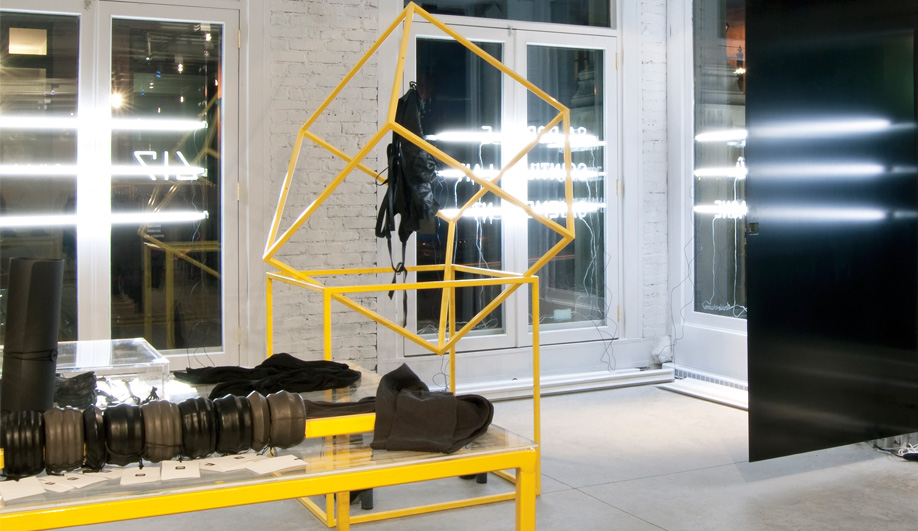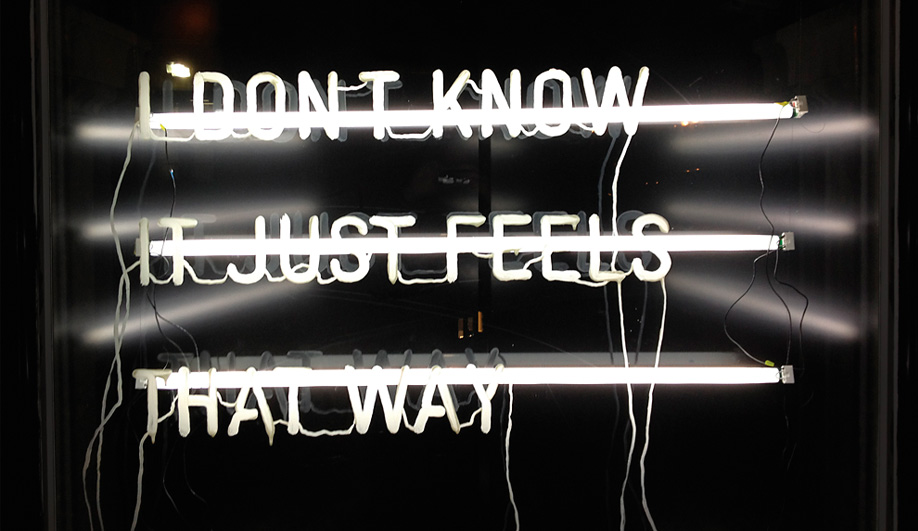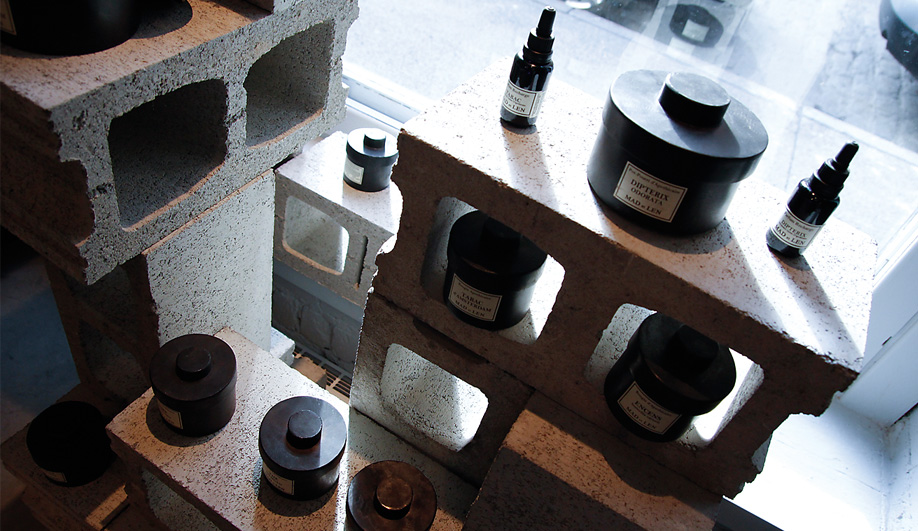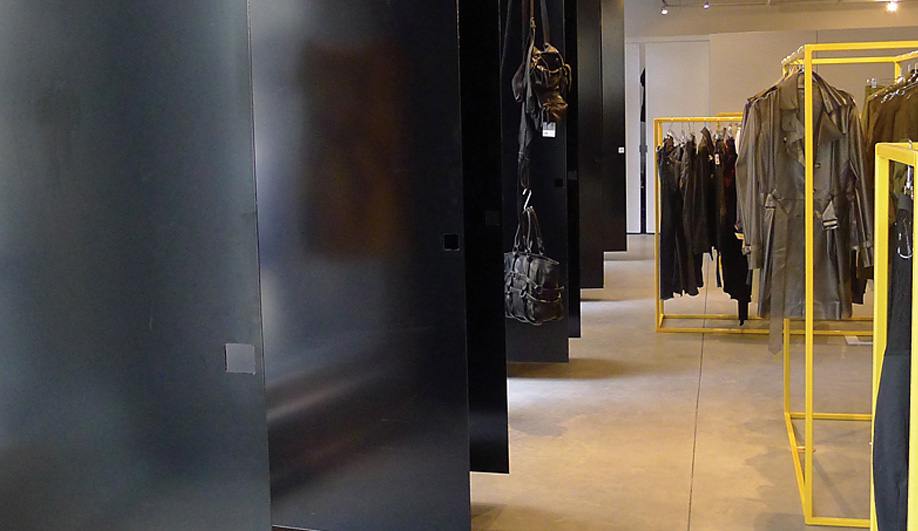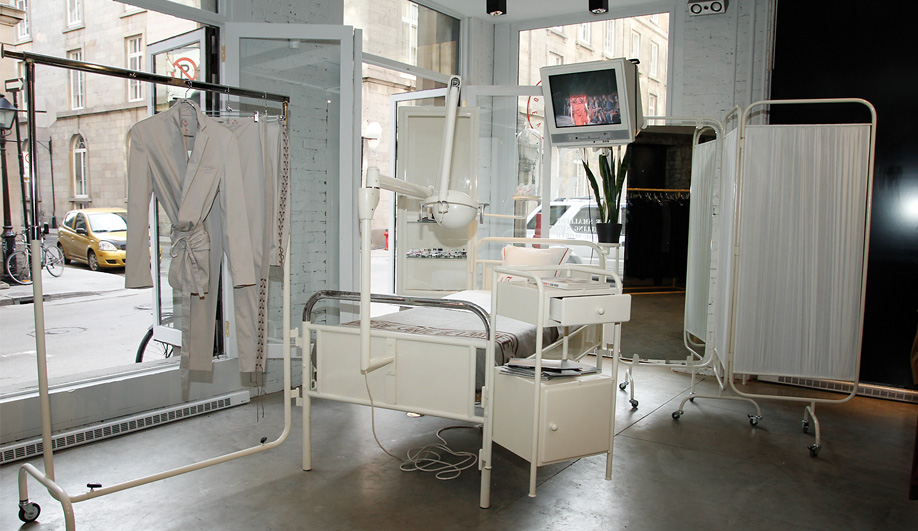Quai 417 takes its name from its address on cobblestoned Saint-Pierre Street in Old Montreal. The quirky, high-end men’s and women’s clothing store occupies the ground floor of the 1910 Beardmore building. The room has housed a succession of unremarkable restaurants, and more recently served as the offices for a leather factory. In summer, the tall, white-painted wooden windows are flung open to link the rectangular shop to the street. Cinder blocks, stacked à la Habitat 67, support displays of shoes and cosmetics. Thin, labile black steel panels, about three metres high by one metre wide, act as shutters; the ceiling is white; and the clothes are displayed on a collection of movable steel frames painted “security yellow” that look like a disassembled Sol LeWitt sculpture.
Quai 417 is meant to evoke the rough space of a loading dock. The conceit is that the designers, Montreal’s Saucier + Perrotte, merely stripped away the accumulations of previous tenants. Then they poured a new polished concrete floor, and deliberately rusticated the brick wall that links the entrance to the unobtrusive fitting rooms. It’s a 150-square-metre room without shadows: simple track lighting installed on rectangular grids supplements abundant natural light. What works especially well is the play between the design and the merchandise, creating a sense of both affinity and contrast between the brazen surfaces and the clothes’ subtle textures.
Saucier + Perrotte is best known for its prize-winning architecture. But with a portfolio ranging from universities and ad agencies to hair salons and spas, the firm has become a go-to office for cutting-edge decor. “There’s no such thing as interior design,” says principal architect Gilles Saucier. “It’s smaller, so we have more control, and we can pay a lot of attention to detail. But it’s a spatial expression. I see it as architecture.” Their signature moves – flush detailing, bespoke steel craftsmanship and a controlled palette of grey, black and white – prove surprisingly effective for room making. “Because boutiques can be ephemeral, there’s a danger of making them superficial,” says Saucier. “But it’s always about the space itself. You have to try to make it a classic.”
The store is co-owned by Jean-François Bourque, Marie-Claude Gravel and Philippe Dubuc. The team showcases a changing lineup of inter-national fashion designers who, like Dubuc, create wearable clothes, but with an accent on artistic imagination rather than industry trends. The owners plan to curate the store as a gallery, inviting artists working in diverse media to use it in inventive ways. Quai 417 also collaborates extensively with graphic design studio Double-Écho. The two-partner firm has contributed everything from business cards and elegant shopping bags to a spunky Christmas installation in the shop windows.
This mix of contemporary art, avant-garde design and hard-to-find fashion and accessories is perilously ambitious. After all, commercially successful art-design-fashion hybrids are rare. And yet it works. Saucier says the hard task was avoiding the twin dangers of exuberance and neutrality. “If the design is too neutral, the architecture disappears. If there’s too much architecture, then the others don’t have any room to express themselves.” He adds, “We found a pretty good balance.”

